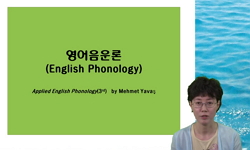The study focused on the history of “Gojyuonzu(五十音図)” and “いろは”, and the changes in vowels(ア行音·ヤ行音·ワ行音) and consonants(サ行子音·タ行子音·ハ行子音) that are closely related to the phonological cha...
http://chineseinput.net/에서 pinyin(병음)방식으로 중국어를 변환할 수 있습니다.
변환된 중국어를 복사하여 사용하시면 됩니다.
- 中文 을 입력하시려면 zhongwen을 입력하시고 space를누르시면됩니다.
- 北京 을 입력하시려면 beijing을 입력하시고 space를 누르시면 됩니다.
부가정보
다국어 초록 (Multilingual Abstract)

The 45 types “Kana(反名) of “Gojyuonzu(五十音図)” are used in modern Japanese because of it is confusion and merger with Kana's(ア行音·ヤ行音·ワ行音) pronunciation and letter. In the Edo period, “Jagyo-oN(ヤ行音)·Wagyo-oN(ワ行音)” will join “Agyo-oN(ア行音)”, with vowels, which existed only in the beginning, in the ancient Japanese language, also appearing in the middle of the word. In addition, historical changes of “Hagyo(ハ行)consonant”(p>Φ(f)>h) and interlinked changes of “Hagyotenko-oN(ハ行転呼音) result in the generation of long vowel, double vowel. Finally, the time when “Sagyo(サ行)·Zagyo(ザ行)consonant” changes from affricatement to fricativeness is related to the time when “チツ(ヂヅ)” affricationalization starts and the time when “チツ(ヂヅ)” affricationalization ends and “ジ:ヂ、ズ:ヅ” is confused.
The study focused on the history of “Gojyuonzu(五十音図)” and “いろは”, and the changes in vowels(ア行音·ヤ行音·ワ行音) and consonants(サ行子音·タ行子音·ハ行子音) that are closely related to the phonological changes of Japanese history. How to facilitate the education of modern Japanese by using phonological changes in the history of the Japanese.
The 45 types “Kana(反名) of “Gojyuonzu(五十音図)” are used in modern Japanese because of it is confusion and merger with Kana's(ア行音·ヤ行音·ワ行音) pronunciation and letter. In the Edo period, “Jagyo-oN(ヤ行音)·Wagyo-oN(ワ行音)” will join “Agyo-oN(ア行音)”, with vowels, which existed only in the beginning, in the ancient Japanese language, also appearing in the middle of the word. In addition, historical changes of “Hagyo(ハ行)consonant”(p>Φ(f)>h) and interlinked changes of “Hagyotenko-oN(ハ行転呼音) result in the generation of long vowel, double vowel. Finally, the time when “Sagyo(サ行)·Zagyo(ザ行)consonant” changes from affricatement to fricativeness is related to the time when “チツ(ヂヅ)” affricationalization starts and the time when “チツ(ヂヅ)” affricationalization ends and “ジ:ヂ、ズ:ヅ” is confused.
참고문헌 (Reference)
1 "重刊捷解新語" 弘文閣 1990
2 高山知明, "日本語音韻史の動的諸相と蜆縮涼鼓集" 笠間書院 2014
3 天沼寧他, "日本語音声学" くろしお出版 1987
4 杉藤美代子, "日本語音声の研究3 日本語の音" 和泉書院 1996
5 林史典, "日本語要説" ひつじ書房 1996
6 日本語教育学会, "日本語教育事典" 大修館書店 1982
7 日本語教育学会, "日本語教育ハンドブック" 大修館書店 1990
8 亀井孝, "日本語のすがたとこころ(一)" 吉川弘文館 1984
9 京都大学文学部国語学国文学研究室, "弘治五年朝鮮板伊路波京都大学国文学会"
10 李基文, "国語音韻史研究" 国語学会 1990
1 "重刊捷解新語" 弘文閣 1990
2 高山知明, "日本語音韻史の動的諸相と蜆縮涼鼓集" 笠間書院 2014
3 天沼寧他, "日本語音声学" くろしお出版 1987
4 杉藤美代子, "日本語音声の研究3 日本語の音" 和泉書院 1996
5 林史典, "日本語要説" ひつじ書房 1996
6 日本語教育学会, "日本語教育事典" 大修館書店 1982
7 日本語教育学会, "日本語教育ハンドブック" 大修館書店 1990
8 亀井孝, "日本語のすがたとこころ(一)" 吉川弘文館 1984
9 京都大学文学部国語学国文学研究室, "弘治五年朝鮮板伊路波京都大学国文学会"
10 李基文, "国語音韻史研究" 国語学会 1990
11 有坂秀世, "国語音韻史の研究" 三省堂 1957
12 国語学会, "国語史資料集ー図録と解説ー"
13 文化庁, "国語シリーズ別冊3 日本語と日本語教育(発音·表現編)" 大蔵省印刷局 1988
14 馬渕和夫, "五十音図の話" 大修館書店 1993
동일학술지(권/호) 다른 논문
-
- 한국일본어문학회
- 신원선
- 2018
- KCI등재
-
- 한국일본어문학회
- 李鳳
- 2018
- KCI등재
-
젠더프리의 가능성 연구 - 2009 개정 교육과정 『고등학교 日本語Ⅰ·Ⅱ』를 중심으로 -
- 한국일본어문학회
- 이은주
- 2018
- KCI등재
-
日本語能力試験対策用の教材に見られる副詞の出現傾向について - 試験対策用のリスト作成-
- 한국일본어문학회
- 趙恩英
- 2018
- KCI등재
분석정보
인용정보 인용지수 설명보기
학술지 이력
| 연월일 | 이력구분 | 이력상세 | 등재구분 |
|---|---|---|---|
| 2026 | 평가예정 | 재인증평가 신청대상 (재인증) | |
| 2021-09-30 | 학술지명변경 | 외국어명 : Korean Japanese of Japanese Language and Literature -> Korean Journal of Japanese Language and Literature |  |
| 2020-01-01 | 평가 | 등재학술지 유지 (재인증) |  |
| 2017-01-01 | 평가 | 등재학술지 유지 (계속평가) |  |
| 2013-01-01 | 평가 | 등재학술지 유지 (등재유지) |  |
| 2010-01-01 | 평가 | 등재학술지 유지 (등재유지) |  |
| 2008-01-01 | 평가 | 등재학술지 유지 (등재유지) |  |
| 2006-01-01 | 평가 | 등재학술지 유지 (등재유지) |  |
| 2003-01-01 | 평가 | 등재학술지 선정 (등재후보2차) |  |
| 2002-01-01 | 평가 | 등재후보 1차 PASS (등재후보1차) |  |
| 2000-07-01 | 평가 | 등재후보학술지 선정 (신규평가) |  |
학술지 인용정보
| 기준연도 | WOS-KCI 통합IF(2년) | KCIF(2년) | KCIF(3년) |
|---|---|---|---|
| 2016 | 0.34 | 0.34 | 0.29 |
| KCIF(4년) | KCIF(5년) | 중심성지수(3년) | 즉시성지수 |
| 0.27 | 0.25 | 0.559 | 0.07 |




 KISS
KISS





